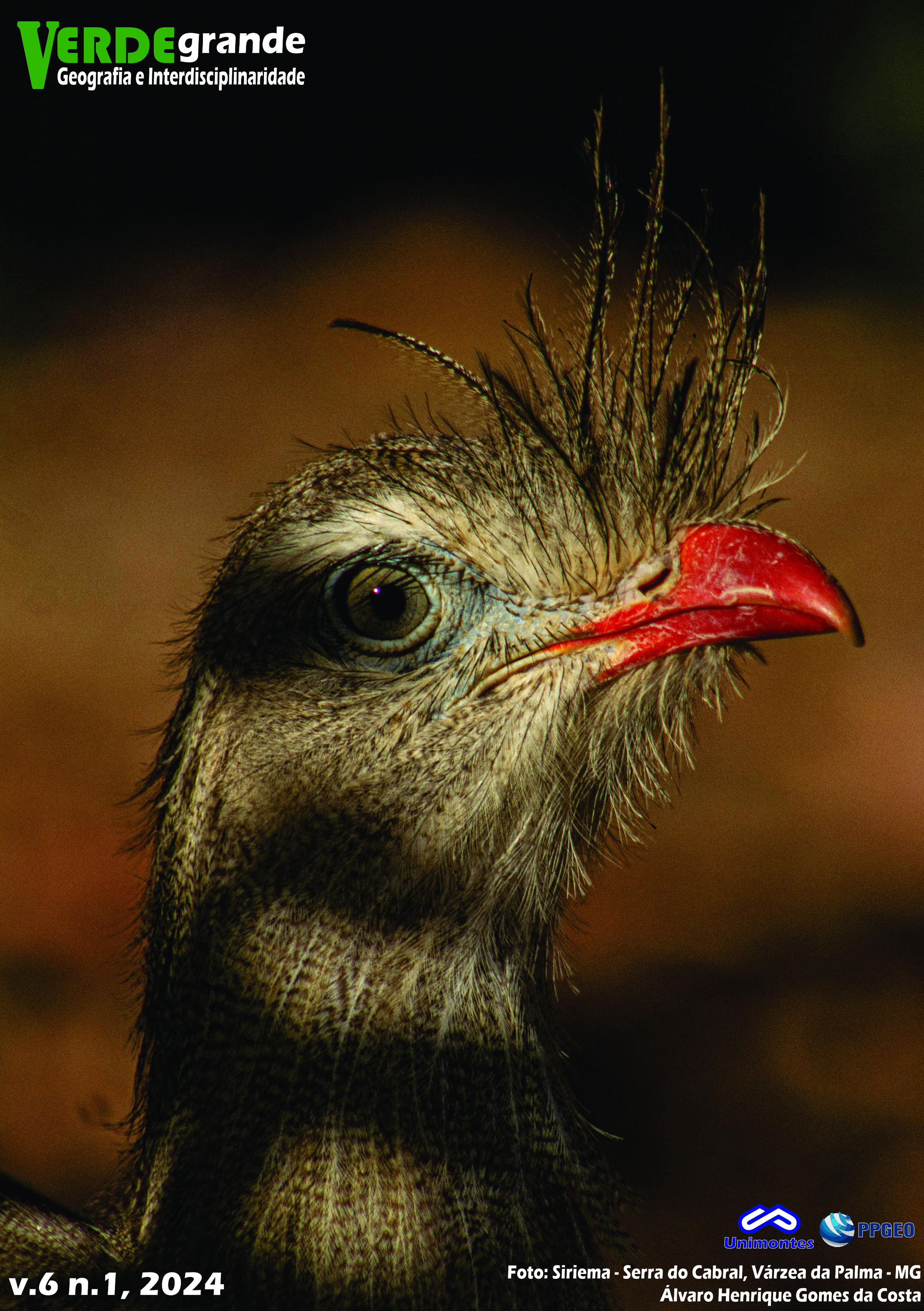Avaliação Diagnóstica no Ensino de Solos na Amazônia: Um Olhar Geográfico
DOI:
10.46551/rvg26752395202415273Keywords:
Diagnostic Assessment, Soil Teaching, High school, School GeographyAbstract
This article aims to initiate a reflection on the Teaching of Soils in School Geography in Technical Courses of Middle Level in an Integrated Form of the Federal Institute of Amazonas (IFAM), CAMPUS Eirunepé. To this end, our first step was to carry out a diagnostic assessment in order to verify previous knowledge and detect possible learning difficulties of students of the Technical Course of Medium Level in Agriculture in the Integrated Form on the subject of soils in the aforementioned campus. The analysis is developed mainly based on the bibliographic review of contributions by Cavalcanti, Libanêo and Luckesi. Based on these contributions, alternatives and possibilities were identified both in the theoretical-methodological scope and in the practical one for understanding the theme in question. Furthermore, the authors' political and ideological posture with regard to the educational process offer us subsidies for understanding and reflecting on pedagogical practice, planning and evaluation. Finally, the results obtained with this pedagogical practice can be a pedagogical tool that makes it possible to see new strategies to enable disciplinary and interdisciplinary actions, thus streamlining teaching about soils.
Downloads
References
CAVALCANTI, L. de S. O ensino de geografia na escola. Campinas: Papirus, 2012.
CAVALCANTI, L. de S. Geografia, escola e construção de conhecimentos. Campinas: Papirus, 2016.
IFAM (Instituto Federal de Educação, Ciência e Tecnologia do Amazonas). Projeto Pedagógico do Curso Técnico de Nível Médio em Agropecuária na Forma Integrada. Eirunepé: IFAM Campus Eirunepé, 2020.
IBGE (Instituto Brasileiro de Geografia e Estatística). Eirunepé. Disponível em: https://cidades. ibge.gov.br/brasil/am/eirunepe/panorama. Acesso em: 28 de maio. 2022.
LIBÂNÊO, J. C. Didática. São Paulo: Cortez, 1994.
LUCKESI, C. C. Avaliação da aprendizagem escolar: estudos e proposições. São Paulo: Cortez, 2013.
LUCKESI, C. C. Avaliação da aprendizagem: componentes do ato pedagógico. 1. ed. São Paulo: Cortez, 2011.
LIMA, M. R. de et al. Teses, Dissertações e Monografias de Educação em Solos no Brasil. Viçosa: Universidade de Viçosa; SBCS, 2020.
LIMA, M. R. O solo no ensino de ciências no nível fundamental. Ciência & Educação, v. 11, n. 3, p. 383-394, 2005.
MENDES, S. de O. O solo no ensino de geografia e sua importância para a formação cidadã na educação básica. Dissertação (Mestrado). Universidade Federal de Goiás, Instituto de Estudos Socioambientais (Iesa), Programa de Pós-Graduação em Geografia, Goiânia, 2017.
MENEZES, E. T. de. Verbete distorção idade-série. Dicionário Interativo da Educação Brasileira - EducaBrasil. São Paulo: Midiamix, 2001. Disponível em: https://www.educabrasil.com.br/distorcao-idade-serie/. Acesso em: 21 abr. 2023.
MORAN, J. M. Metodologias ativas para uma aprendizagem mais profunda, 2013. Disponível em: http://www2.eca.usp.br/moran/wp-content/uploads/2013/12/metodologias_moran1.pdf. Acesso em: 25 abr. 2023.
MORAIS, E. M. B. de. As temáticas físico-naturais na Geografia escolar. 2011. Tese (Doutorado) – Faculdade de Filosofia, Letras e Ciências Humanas, Departamento de Geografia da Universidade de São Paulo, São Paulo, 2011.
MORAIS, R. Ciências para Séries Iniciais e alfabetização. Sagra DC Luzzatto: Porto Alegre, 1998.
PRODANOV, C. C.; FREITAS, E. C. de. Metodologia do trabalho científico: Método e técnicas da pesquisa e do trabalho acadêmico. 2. ed. Novo Hamburgo: Feevale, 2013.
SACRAMENTO, A. C. R.; FALCONI, S. Educação geográfica e ensino de solos: uma experiência em sala de aula. Revista Geográfica de América Central, San José, p. 1-15, 2011.
Downloads
Published
How to Cite
Issue
Section
License
Copyright (c) 2024 Cassiano Lobato Paulino, Mircia Ribeiro Fortes

This work is licensed under a Creative Commons Attribution-NonCommercial-NoDerivatives 4.0 International License.
You are free to:
Share — copy and redistribute the material in any medium or format
The licensor cannot revoke these freedoms as long as you follow the license terms.
Under the following terms:
Attribution — You must give appropriate credit, provide a link to the license, and indicate if changes were made. You may do so in any reasonable manner, but not in any way that suggests the licensor endorses you or your use.
NonCommercial — You may not use the material for commercial purposes.
NoDerivatives — If you remix, transform, or build upon the material, you may not distribute the modified material.
No additional restrictions — You may not apply legal terms or technological measures that legally restrict others from doing anything the license permits.


















 Esta obra está licenciada com
Esta obra está licenciada com 